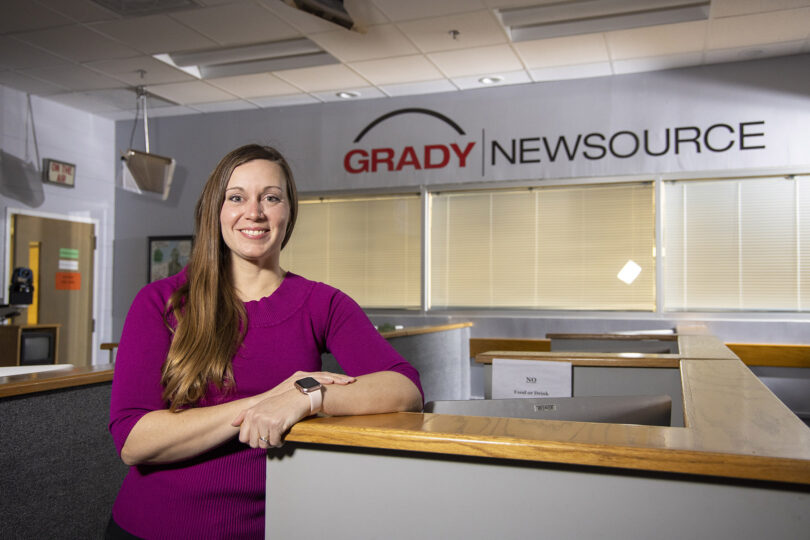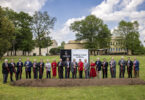Amanda Bright has always wanted to make an impact on her community, but over the years the impact—and the community—have expanded.
“I have always craved to have more impact,” Bright said. “I want to change people’s lives in a tangible way, and I want to do something to forward my community and not just be in my community.”
It’s for this reason that Bright started out as a community journalist, pivoted to teaching community college and high school journalism classes and now teaches digital journalism at the Grady College of Journalism and Mass Communication.
“Journalism and education—these are my two halves—and I am fortuitously positioned in this moment because I love the intersection of these two subjects. I think, legitimately, what’s going to make our society progress is an intentional focus on how to improve both of these areas and how they intersect,” she said.
One way Bright is moving the communities of Grady College and UGA forward is by channeling her passions into classes that teach students multiplatform journalism, digital design, storytelling and how to be part of the solution.
“Part of my draw to solutions journalism is that idea that we should not just be about reporting all the problems, but also rigorously reporting on what people are trying to do to solve those problems and whether or not it’s working,” she said.
She also teaches students, both journalism majors and non-majors, how to be digital citizens through classes like “Media Savvy: Becoming Digitally Literate.” Diving into topical issues like misinformation, filter bubbles and conformation bias, Bright teaches her students where to find accurate information and how to process it in an ethical, responsible way.
Bright was hired to not only teach but also to bring coherence to the various products of Grady Newsource, the capstone class for journalism majors, along with reporting from various other courses and programs. Bright used her vast knowledge of website design to direct the overhaul of the Grady Newsource website, social media accounts, digital newsletters featuring the week’s top stories and a soon-to-be released app that was created in conjunction with the college’s New Media Institute. The goals are to educate the capstone students in multiplatform reporting and also to invite the community to engage more with Grady Newsource.
“I am so invigorated that we have this space with Grady Newsource and we have new students every semester that have ideas and are willing to try new things,” Bright explained. “There is nothing more exciting than a blank check to innovate. That’s what keeps me going.”
Bright, who was named Journalism Teacher of the Year last year at Grady College, has made a big impact in a short time not only on the student community but also in the Georgia newspaper community, too. Earlier this year she directed the inaugural group of Digital Natives, an outreach project with the Georgia Press Association. The project paired student journalists with community newspapers to tackle specific digital goals. The students helped the newsrooms with projects like setting up Facebook and Instagram accounts to report news, incorporating infographics and video into news content and teaching how Google analytics can inform website decisions. The program was highly lauded by all involved and plans for the second year are already in motion.
It’s projects like Digital Natives that give Bright satisfaction she is in the right place at the right time bridging journalism and education.
“Journalism as a vocation is one of the most important things we can do to,” Bright said. “It helps communities locally and globally. Its purpose of informing people so they can make good decisions is so mission driven, and training the next generation of journalists is important work. I cannot think of a better way to spend my time.”








